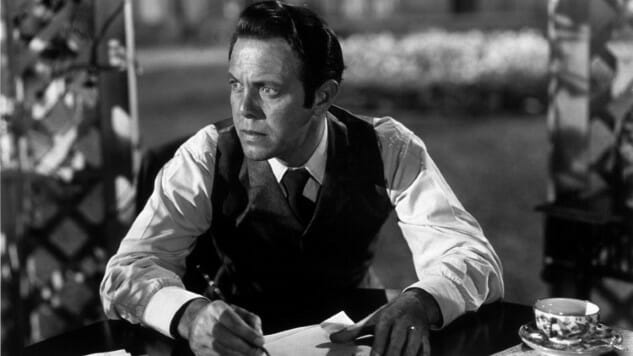
This post is part of Paste’s Century of Terror project, a countdown of the 100 best horror films of the last 100 years, culminating on Halloween. You can see the full list in the master document, which will collect each year’s individual film entry as it is posted.
The Year
Well, we’ve finally reached it—the year that might be the absolute nadir for horror, as far as this century project is concerned. Suffice to say, there’s barely anything for us to choose from here, to the point that one has to ask questions like “Does Sunset Boulevard count as horror?” Great film though Billy Wilder’s picture may be, and suitably disturbing at times, we can’t in good conscience refer to it as a “horror movie.”
Some of the only films that qualify for that kind of distinction in 1950 were produced outside of the U.S. In the U.K., there’s a so-so adaptation of The Fall of the House of Usher, which preceded the well-regarded American version from Roger Corman that would arrive a decade later. And in Mexico, we have “The Man Without a Face,” El Hombre Sin Rostro, which is a low-budget entry that lands somewhere between film noir and horror-thriller. Other than that? Almost nothing. Horror is at its least culturally relevant here, but the next few years will begin to reclaim it from obscurity via its fusion with a film genre that had come into its own, post-war vogue: Science fiction.
1950 Honorable Mentions: The Fall of the House of Usher, El Hombre Sin Rostro
The Film: House By the River
Director: Fritz Lang
It’s interesting how the silent, German filmography of director Fritz Lang seems to be significantly better known to film geeks these days than his later American output, considering the fact that Lang spent 1936-1960 directing a steady stream of dramas, noirs and thrillers in Hollywood—more than 25 in all. Although we understandably revere the man for his utterly groundbreaking work in foundational, wildly imaginative films such as Metropolis, M and Dr. Mabuse, his American features proved Lang’s ability to change and adapt with the times, grafting his mastery of visual motifs and shadow onto emerging genres as they arrived. He was by no means only a silent era director, and films like House By the River show his American stylings at their best, even if it’s not as well known as noirs such as The Big Heat.
This is a sultry, muggy sort of noir, with elements of stifling Southern Gothic in its darkened manor houses and sweaty browlines. Although it has some of the same “country noir” leanings we mentioned in this series’ entry on 1947’s The Red House, this is less a story about the long-buried sins of rural folks, and more a character profile of a privileged scoundrel’s deceitful attempt to preserve himself at all costs, even if it means throwing his own family to the wolves.
Actor Louis Hayward is a consummate noir slimeball here as Stephen, a diminished novelist whose glory days are behind him, leaving him to putter around the family estate and lust after the hired help. When a drunken outburst leaves the family maid dead at Stephen’s hands, he immediately ropes his good-natured brother into helping dispose of the body, which is dumped into the titular river. But these crimes, of course, can never stay buried for long … and what better fall guy is there than the brother you’ve always resented? Hayward plays the character beautifully, with early scenes establishing his capacity for compassion, just to make his inhumanity toward his own family that much more despicable in the end.
And then, of course, there’s the river itself. Lang’s camera obsesses over the natural features of the river, making its muddy water a character in and of itself. There’s an air of magical realism in the way Lang frames the river as first a willing accomplice and eventually a turncoat traitor in Stephen’s crimes, to the point that you half expect the novelist to rebuke its betrayal. Fish leap out of its waters, seemingly attempt to flee whatever malice is harbored there. The lazy passage of the water is oddly mesmerizing.
All in all, House by the River makes for one of the era’s more underrated, low-budget noirs, benefiting greatly from an increasingly unhinged central performance and the presence of Lang’s always professional direction to achieve a well-defined mood of constant guilt and unease.
Jim Vorel is a Paste staff writer and resident horror guru. You can follow him on Twitter for more film and TV writing.